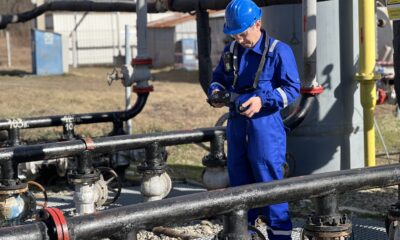

Economy
The other reason for divestment
Higher education institutions that don’t divest from fossil fuel companies because it’s the right thing to do should divest from “stranded assets” because it makes financial sense, argues Robert Litterman.
This article originally appeared on Ensia.
Recently, higher education institutions have been asked by Bill McKibben and his organisation 350.org to consider divesting their endowments of fossil-fuel companies. Almost all of these institutions have rejected the requests.
The president of Harvard, Drew Faust, for example, recently wrote in a statement, “I do not believe, nor do my colleagues on the corporation [committee on shareholder responsibility], that university divestment from the fossil fuel industry is warranted or wise.” Harvard holds endowment assets to advance an academic mission, she explained, not to “serve other purposes, however worthy.”
And while it makes perfect sense to argue that acting solely on ethical or moral grounds is difficult to reconcile with the fiduciary responsibility to prudently invest the endowment, that may not be the end of the story. There is an opportunity for the Harvard endowment, and other investors, to tilt their portfolios in order to generate an attractive return while reducing climate risk if they consider the economics, not necessarily the ethics, of the situation.
It is well known that emissions markets have not yet priced climate risk appropriately, but what is not well understood is that today’s equity markets build in expectations that climate risk will not be priced rationally for a very long time. The market expects a slow increase in emissions prices over the next several decades.
But what the market does not yet realise is that this expectation, sometimes referred to as the “slow policy ramp”, is irrational — it does not appropriately take risk into account. The actual rational expectation for the price path of emissions is a sudden jump of global carbon emissions prices to a level high enough that incentives are created that will, with extremely high probability, eliminate any threat of catastrophic climate risk. Of course, no one knows what the future will bring, but I think this rational pricing of emissions is much higher and will come much sooner than the market expects.
Therefore an opportunity exists in going short certain equities, such as coal and tar sands, which under the slow policy ramp for emissions prices still have significant valuations, but which will actually lose value when it becomes recognised that carbon emissions will soon be priced rationally. Such equities are known as “stranded assets”.
The other piece of the puzzle is going long the broad equity market. Such an exposure can be easily implemented by institutional investors through a total return swap — a derivative that creates cash flows to the investor, positive or negative, equal to the total return that would be generated by owning a basket of specified long and short underlying equity exposures. This swap creates the equivalent economic benefit of selling stranded assets at current valuations and investing those proceeds in the broad equity market. It is a bet that stranded assets will underperform the equity market.
The reason a sudden jump in emissions prices makes sense is because the price of emissions is the brake society has in order to create appropriate incentives for emissions reduction. How hard should society press on that brake today? The answer requires application of a complex mathematical technique known as robust dynamic optimal control in a context with highly uncertain nonlinear responses — but simple intuition can be just as effective in helping to chart the course.
Consider two scenarios. In the first scenario you are racing down a mountain road with a sharp curve ahead. You are going fast, but you’ve been down this road many times so you know that you need to slow down significantly to get around that curve safely. And you know exactly how much distance it takes to slow down going into the curve. You brake slowly at first, increasing the pressure as you get closer to the curve. This is the profile of the slow policy ramp for emissions prices built into current equity valuations.
In the second scenario the situation is identical, except you have never been down this road before. In the instant you see the curve, you realise that you need to slow down, that there is a steep cliff off the side of the road and that you aren’t sure the speed at which it will be safe to round that upcoming corner — which is sharper now than it initially looked. As time compresses, you realise that you might be going too fast and you need to slam on the brakes.
The difference between scenario one and scenario two is uncertainty and risk aversion. In scenario two, you instantly brake hard enough that you expect to ease up on the brake as you slow down safely. That is the situation society is in today with respect to climate risk, and equity markets have not yet realised it.
Of course governments have shown very little ability to support rational climate policy lately, especially the US. Behavioural finance would emphasise the irrational behavior of individuals, the frictions that prevent appropriate policy and so on. And some investors think people are never rational.
But it turns out that behavioural anomalies, once understood, often disappear. It’s very possible that fear of catastrophic outcomes will lead to rational global pricing of emissions much sooner than the market has built into current prices of stranded assets. If this happens, stranded assets will underperform the market and those taking advantage of the swap will profit.
I think a savvy investor, particularly an educational endowment, recognises that people do become more rational over time. Such an investor would see the risk embedded in the stranded assets in their portfolio.
At the World Wildlife Fund, where I chair the investment committee, we voted last May to use a simple total return swap as described above to hedge the stranded assets embedded in the funds in which we have investments, without otherwise disturbing the portfolio. Since then, stranded assets have underperformed the market.
Similar actions by educational endowments might actually uphold the responsibility to prudently invest the endowment while also serving the interests of the broader society to mitigate climate change. Moreover, there is no economic reason to size the swap simply to hedge existing exposures.
A more sophisticated investor might recognise that an even larger exposure to this stranded assets swap would create some risk, but would also potentially represent a return-generating opportunity — all while aligning the interest of the endowment with that of the institution and encouraging rational behavior with respect to climate risk.
Robert Litterman is the chairman of the Risk Committee and of the Academic Advisory Board at Kepos Capital.
Further reading:
Investors worth $3tn put pressure on fossil fuels industry to rethink future
Yes, we too can profit by killing the planet because… we’re Harvard
Fossil fuel divestment campaigns can help ‘stigmatise’ industry
Climate change a ‘firmly established’ material risk for mainstream investors


 Environment10 months ago
Environment10 months agoAre Polymer Banknotes: an Eco-Friendly Trend or a Groundswell?

 Environment12 months ago
Environment12 months agoEco-Friendly Home Improvements: Top 7 Upgrades for 2025

 Features9 months ago
Features9 months agoEco-Friendly Cryptocurrencies: Sustainable Investment Choices

 Features10 months ago
Features10 months agoEco-Friendly Crypto Traders Must Find the Right Exchange




























